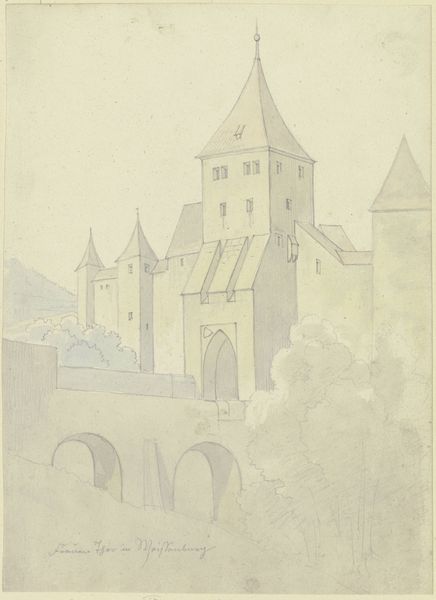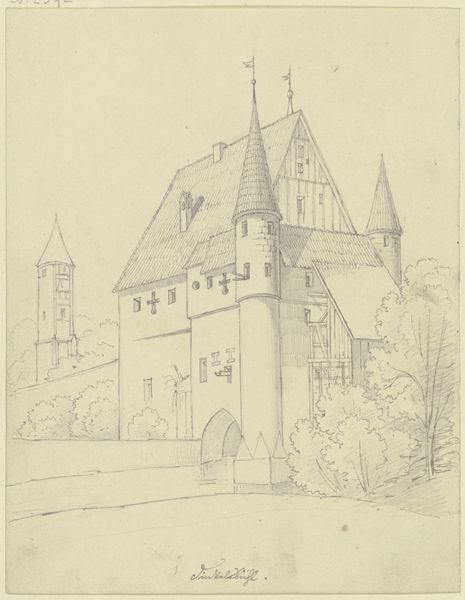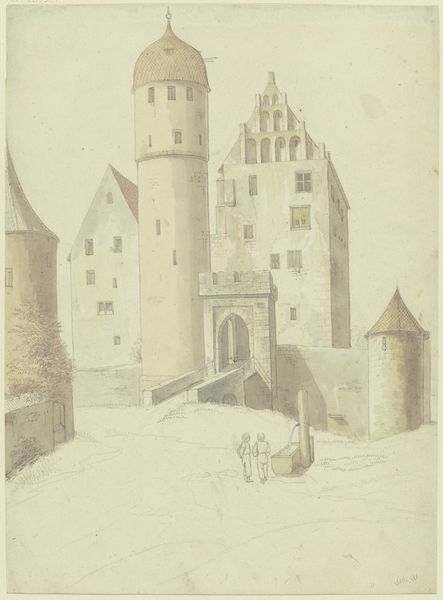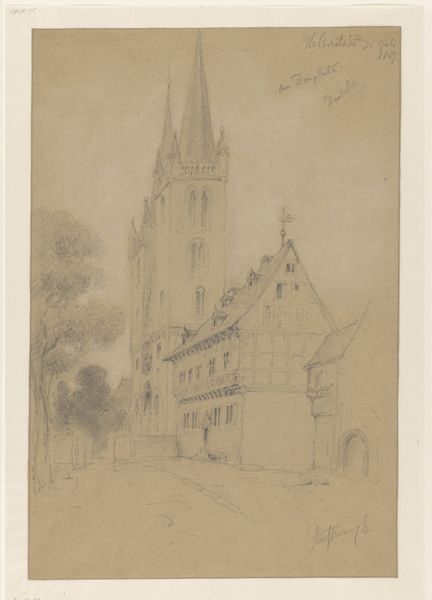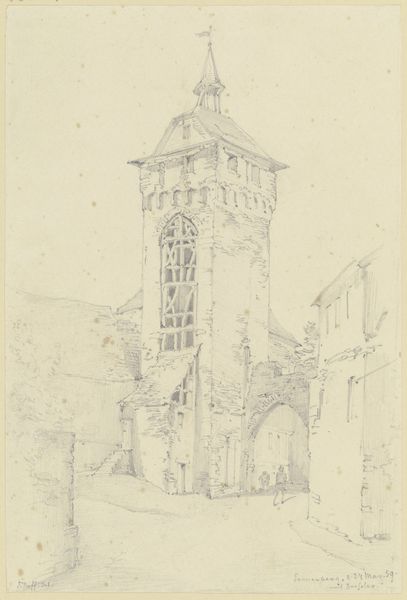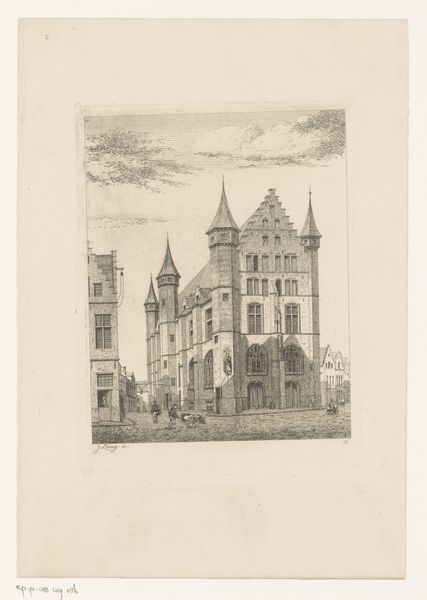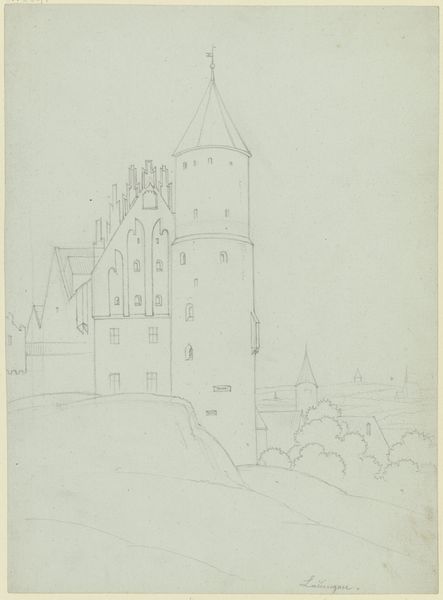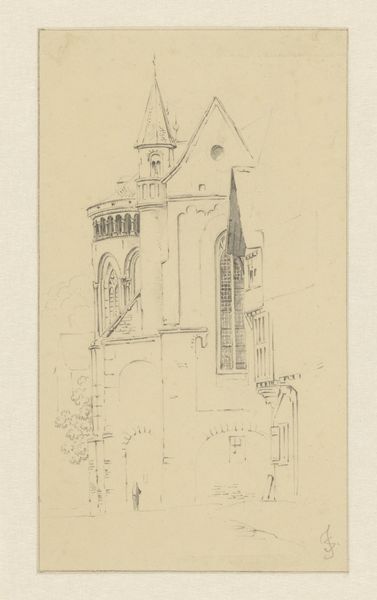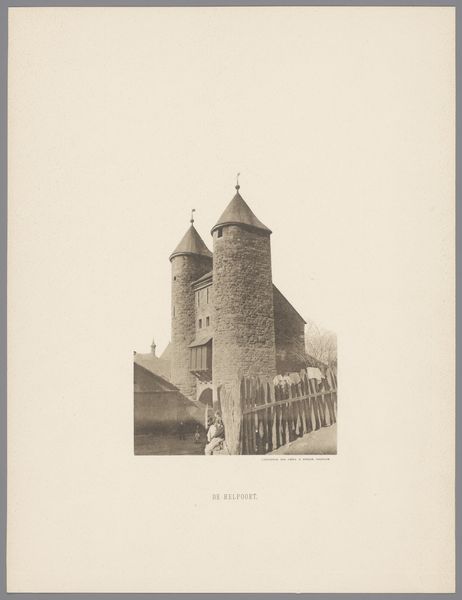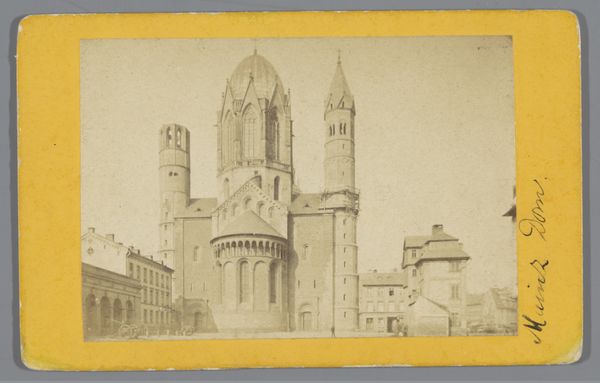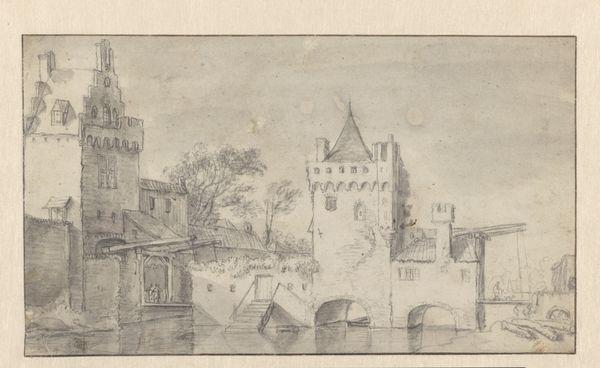
Klosterkirche zu Ilbenstadt in der Wetterau (Original Title) 30 - 1846
0:00
0:00
Copyright: Public Domain
Editor: Looking at this drawing by Friedrich Wilhelm Ludwig, "Klosterkirche zu Ilbenstadt in der Wetterau", dated to 1846, rendered in pencil and ink, I'm struck by the sketch-like quality, and the towers rising solemnly above what seems like an abandoned structure. How do you read this work in its historical moment? Curator: Well, given the period and the subject, it's essential to consider the rise of Romanticism. Artists like Ludwig were often drawn to architecture, not just for its aesthetic qualities, but for what it represented historically and culturally. The sketch aesthetic suggests it may have been conceived en plein air, thus representing the immediate encounter of the artist. How might this relate to power? Editor: I suppose these abandoned architectural renderings showcase the strength of the church over the common people. It's trying to illustrate an eternal power? Curator: Perhaps. Think about the emerging concept of the "nation" during the 19th century. Religious monuments like this one were being revisited, documented, and, in some cases, idealized as emblems of German cultural identity. It is worthwhile asking: Who had access to create and propagate images like these, and who were they meant to inspire? Editor: So, instead of just seeing a church, we're seeing a conscious effort to build a specific historical narrative? Curator: Precisely! These images, and their methods of dissemination – prints, illustrated books, museum displays – played a crucial role in shaping popular perceptions of the past and reinforcing certain ideologies. Do you find yourself appreciating the landscape genre here at all? Editor: It hadn’t initially jumped out at me as a Romantic landscape, yet that’s precisely what it is! Seeing this piece as part of constructing German identity gives me a new way of interpreting Ludwig's approach. Thank you! Curator: My pleasure. Considering art in relation to its socio-political context reveals deeper layers of meaning and purpose. Keep that in mind as you progress in your studies.
Comments
No comments
Be the first to comment and join the conversation on the ultimate creative platform.
